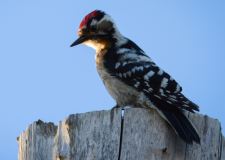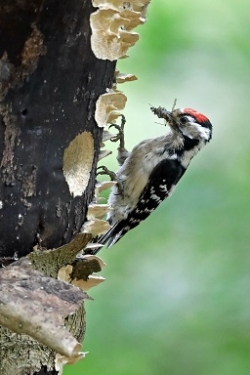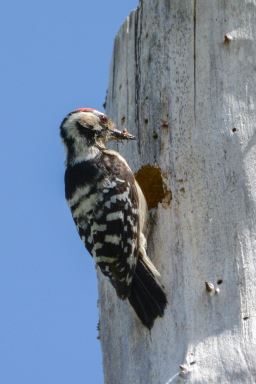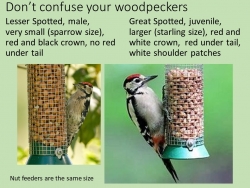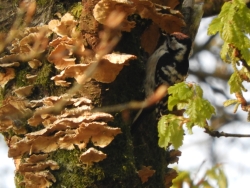Thanks everyone for records sent in so far. Calling, drumming and displaying birds have been reported from most of the sites monitored in 2022 plus some new locations, including in Berkshire, Norfolk, Surrey and Sussex. Pairs excavating nest cavities have been found in three locations so far.
Please keep watching and visiting the sites where drumming birds were found earlier in the year to try to pick up birds excavating nests and displaying and mating prior to egg laying.
Both ♂️ & ♀️ excavate the holes, which take 7-10 days to complete. But they can make false starts. The pair often call and display and are sometimes seen mating. The first egg is typically laid in late April. So look out for birds excavating now.
There is a great video of a female LSW excavating a nest cavity posted on Twitter by Nick Moran, @sconebirding on 7 April.
LesserSpotNet volunteers have observed over 150 breeding attempts since 2015. Of these we can estimate the date the first egg was laid for 109 nests. The typical first egg date was 25-28 April, the earliest was 17th April and the latest 17th May. The timing of egg laying is affected by weather and the availability of food for the female to get into good breeding condition.
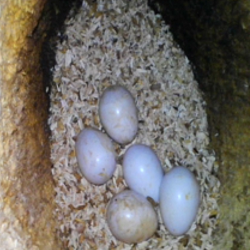 The females lay one egg each morning and only start incubating once the clutch is complete, usually 5 or 6 eggs.
The females lay one egg each morning and only start incubating once the clutch is complete, usually 5 or 6 eggs.
Information on the number of eggs laid is important to understand why Lesser Spots have poor breeding success. So please let us know of any nests found at this stage. If you have already been fortunate enough to find a nest cavity or excavating bird please keep following the nesting attempt and contact Ken Smith at
Incubation takes only 11 days and the young take another 20 days or so to be ready to fledge. However the weather affects the timing, the warm weather encourages the caterpillars on Oak tree to grow but a dry spell may slow things down.
Once the birds are settled into incubation and all the leaves emerge finding nests is much more challenging but from mid-May alarming adults or calling young may lead you to the nest.
See more tips on finding and observing nests here. Lesser Spot young in the nest are noisy but far less so than Great Spotted Woodpeckers. You probably need to be within about 20m of a Lesser Spot nest to hear the young calling.
When watching birds please keep your distance and take care not to disturb them as they excavate the nest cavity.
